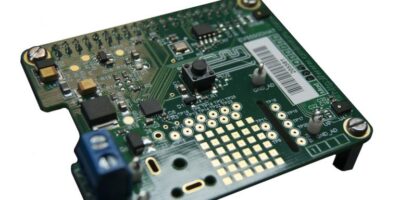CML Microcircuits adds voice codec capability to Raspberry Pi
Bringing the features and benefits of its low power voice codec, the CMX655D, to hobbyists, developers and product manufacturers, CML Microcircuits has introduced the EV6550DHAT, a Raspberry Pi hardware attached on top (HAT) -compatible evaluation and development board.
To make evaluating and developing with the CMX655D as accessible as possible, CML has created the EV6550DHAT. It is compatible with any Raspberry Pi with a 40-pin extended GPIO connector and can be completely powered by the Raspberry Pi. It does also support an external power source if other HATs or peripherals are being used and limiting the total power available from the host USB interface.
The CMX655D has been developed for digital voice and sensor applications. It integrates the entire signal chain, from dual matched digital MEMS microphone interfaces to a 1W Class D speaker driver, incorporating decimation, filtering, signal processing and digital gain, supported by an I2S/PCM audio interface and serial peripheral interface (SPI) control. The single chip, low power device adds advanced voice coding/decoding to any application.
“The Raspberry Pi is the perfect platform to demonstrate the features and capabilities of the CMX655D with little or no development effort,” commented David Brooke, product manager of CML Microcircuits.
As well as being HAT-compliant, the EV6550DHAT open source software is accessible via many third-party apps and projects includingGTK3+. Geanie and Glade. As a result, the graphic user interface (GUI) used to access the EV6550DHAT and all of the features are easily modifiable and accessible to the engineering community, confirms CML Microcircuits.
Features include access to pre-recorded sample files and the recording and playback audio files in the .wav format. This allows users to playback pre-recorded samples at different rates and levels for comparison between settings and how they influence audio quality. The configurable parameters include sample rate (from eight, 16, 32 and 48ksamples per second), volume and level (dB). The GUI allows the audio input gain to be set between -12dB to +3dB, while playback volume can be set between -90dB to 0dB. Muting and smoothing is also supported.
The EV6550DHAT is available now from Digi-Key and Mouser.




